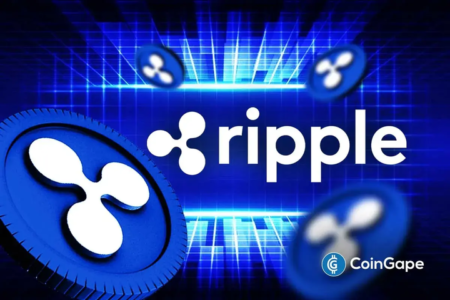Understanding Cryptocurrency Mining and Canxium’s Innovative Approach
Cryptocurrency mining is a complex interplay of market prices, operational costs, and network stability. Bitcoin exemplifies this balancing act: as prices rise, mining operations surge, but when prices fall, many miners exit the market, leading to a decrease in hash power. In contrast, Canxium (CAU) is pioneering a fresh approach via a constant-cost mining model and a self-balancing supply system, which could help stabilize the volatile landscape of crypto mining and provide miners with a more predictable experience.
As of October 2025, the price of Canxium is hovering between $0.37 and $0.39, with a market capitalization of around $500,000. While it currently exists as a low-cap token, its innovative approach to mining has piqued community interest. Canxium seeks to provide a solution to the problems endemic in cryptocurrency mining—especially volatility—by redefining how mining activities are coordinated to ensure consistency and reduce operational challenges.
The Influence of Bitcoin on Mining Viability
Bitcoin plays a critical role in dictating the viability of mining operations. Its network routinely adjusts difficulty levels approximately every 2,016 blocks to maintain a steady block time of about ten minutes. However, as energy costs, hardware efficiencies, and BTC prices fluctuate, miners’ profit margins experience constant oscillation.
When Bitcoin prices rise, we see an influx of hash power as more miners enter the game, leading to new highs in hash rates across regions like Texas, Iceland, and Kazakhstan. Conversely, when BTC prices dip, the mining economy can turn bleak, with some regions reporting exorbitant production costs that exceed $120,000 per Bitcoin. Consequently, smaller operators tend to exit the market when prices fall below their operating thresholds, exacerbating the cycle of volatility.
How Canxium Implements ‘Constant-Cost’ Mining
Canxium aims to remedy the inherent issues linked to mining profitability fluctuations. The core of its innovative framework is Retained Proof of Work (RdPoW), a modified Proof of Work mechanism designed to allow miners to perform calculations offline before submitting their completed proofs at a later time. This model keeps the energy cost per CAU coin constant, irrespective of the ever-changing market dynamics.
By focusing on minimizing wasted hash power, Canxium’s RdPoW enhances network inclusivity, allowing users from areas with unstable internet connections to participate more freely. However, the mechanism does have its risks, notably around market and technological uncertainties. During high-traffic periods, more coins are released; during low-activity phases, coin issuance decreases. While this approach could minimize boom-and-bust cycles, the sustainability of this method is yet to be thoroughly verified through independent research.
Features and Innovations Verifying Canxium’s Vision
As of October 2025, Canxium showcases several groundbreaking innovations aimed at redefining mining economics. Key features include a fixed cost per unit that is designed to stabilize miner revenues irrespective of token price fluctuation. The demand-responsive supply model helps adapt coin issuance dynamically based on network activity, while the RdPoW consensus allows for offline proof submissions to optimize energy efficiency.
The project also promotes low transaction fees, positioning CAU as a viable option for everyday electronic cash transactions. However, rumors regarding potential multi-algorithm mining and staking features — requiring around 320 CAU — remain at the conceptual stage with limited implementation as of now. It’s also important to note that the system has not undergone independent auditing, which may raise concerns regarding its reliability and security.
The Experimental Nature and Benefits of Canxium
Should Canxium’s constant-cost model function as intended, it has the potential to democratize mining by making it more accessible. Nonetheless, practical issues like liquidity and trading volumes pose challenges, limiting the use of CAU for micropayments and cross-border transactions.
The community remains hopeful about Canxium’s potential to interoperate with other blockchain systems, particularly Kaspa and Ravencoin. However, as of October 2025, these ideas are mostly aspirations rather than actual developments. Currently, CAU is accessible through limited exchanges, such as MEXC and CoinEx, restricting its global reach and liquidity pools.
Since its inception in 2023, Canxium has experienced a series of code updates and smaller initiatives, but its community is divided in their appraisal of the token, with some dubbing it a “solution to Bitcoin’s flawed incentives” based on individual opinions rather than verified data. For Canxium to mature from a conceptual model into a credible player in the crypto market, it must demonstrate consistent performance and security under real-world conditions.
Conclusion: The Future of Canxium
Canxium represents a novel and ambitious attempt to rethink the economics of Proof-of-Work mining through a combination of stable costs and adaptive supply mechanisms. While these innovative features present the potential for a paradigm shift within the mining landscape, real-world validation will be crucial. The project’s future hinges on its ability to rigorously test its concepts, secure independent audits, and successfully integrate with larger exchanges and custodial services. Until these milestones are achieved, Canxium remains an experimental project worth observing closely in the fast-evolving world of cryptocurrency.
















